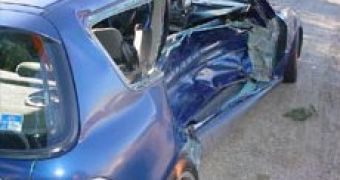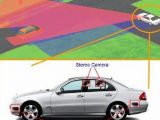If you think a little bump can ruin your day, think again. A side-impact can ruin your life! Side-impacts are probably the most dangerous types of car crash, mostly due to the fact that the sides of the cars are the least protected areas. That's why European researchers are now trying to develop a car body that is intelligent and able to protect the occupants of the vehicles from imminent side impacts. The newly-developed bodies will be used into future car designs and equipped with radar sensors and cameras that will monitor the surroundings for potential collisions.
Upon completion, the system would detect a dangerous situation up to 200 milliseconds before the impact even takes place, to activate a protection system. Advanced Protection Systems, or APROSYS for short, has been demonstrated just last week in Valladolid, but it could take a few more years before being implemented into mass production vehicles.
Two radar sensors and a stereo video camera set on the sides of the vehicle can detect and track objects that may impact the side of the car. APROSYS can survey an area of 20 meters around the car, and can now determine whether the approaching object poses any danger, within 200 milliseconds before the impact occurs. After deciding if there is a possibility for a side-impact, APROSYS automatically engages the side-impact protection system to minimize the injury for the occupants of the vehicle.
How it works?
Fraunhofer Institute for Information and Data Processing researcher Dr. Dieter Willersinn said that "During the journey, the system has to distinguish moving objects - meaning other cars that could potentially cause an accident - from stationary objects such as horse or trees." The central computer of APROSYS released an electrical discharge into a wire-shape memory alloy which acts as a trigger, bending the wire and releasing a spring.
When the spring is released, it pushes a steel bolt located in the seat towards the door, while another bolt in the door comes into position in the direction of the first, for additional structural support. "We opted for this solution because it is faster than any conventional solenoid switch," said Bj?rn Seipel from the Fraunhofer Institute for Structural Durability and System Reliability. Both the metal box of the car and the bolt work together to absorb the energy of collision and stabilize the door.
The APROSYS program was started in 2004 and is supposed to continue until March 2009, after which it will be ended. The total budget of the project is about 30 million euro, of which 18 million euro were provided by the European Union.

 14 DAY TRIAL //
14 DAY TRIAL // 
